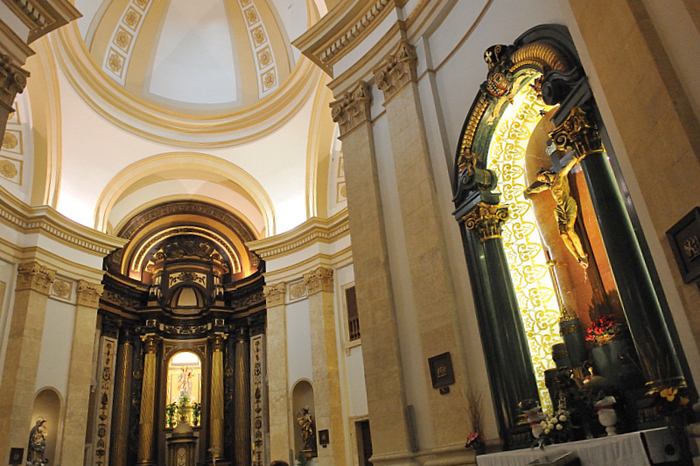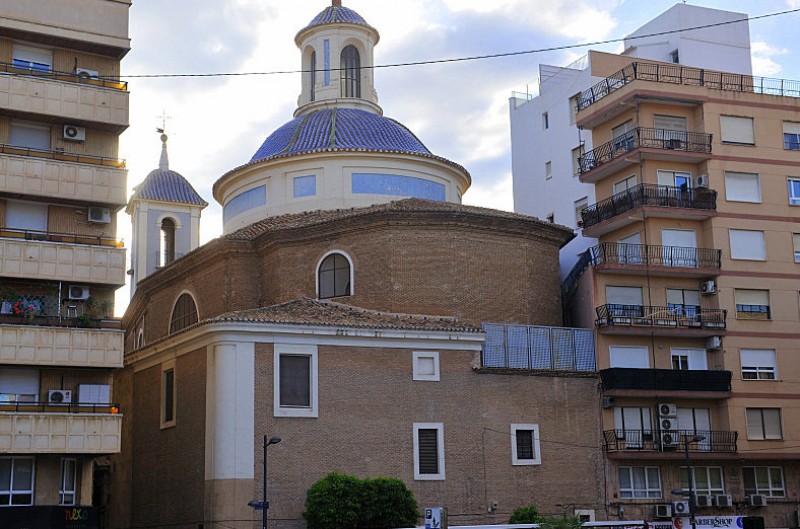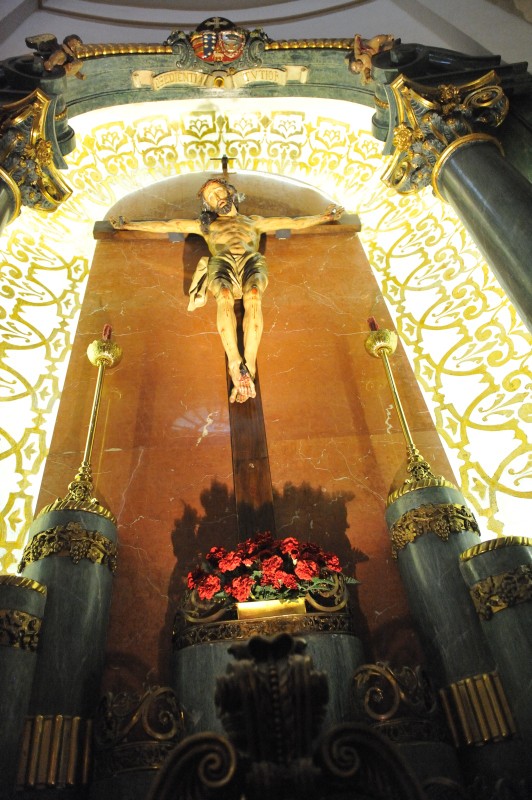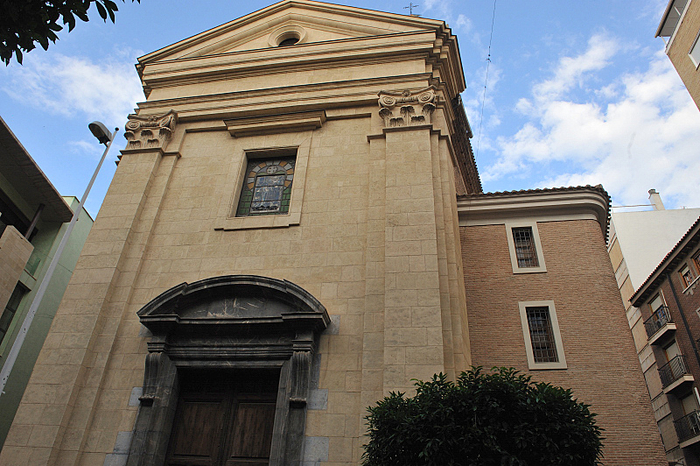article_detail
The church of San Lorenzo in the city of Murcia
The figure of Cristo del Refugio departs from this church on Holy Thursday during the Semana Santa processions in Murcia
The church of San Lorenzo in Murcia is one of the traditional parish churches es in the centre of the city with the current building dating back to the end of the 18th and the early 19th centuries, having been built between 1788 and 1810.
Construction took so long due to interruptions during the Napoleonic Wars, and it also dates from a transitional phase between the baroque and neo-classical periods in Murcia architecture. Among the most notable features are the twin bell-towers and the central dome with a skylight, which is simply but elegantly decorated in blue and white.
Indeed the whole church is characterized by the simplicity and harmony of its design, which was created by Ventura Rodríguez, a Madrid architect who was Director of the Real Academia de Bellas Artes de San Fernando and who also collaborated in the completion of the tower of Murcia cathedral at the end of the 18th century.
Rodríguez was heavily influenced in his work by Italian architects working in Spain such as Filippo Juvara and Giovanni Battista Sachetti, and was also well acquainted with the work of Gian Lorenzo Bernini and Francesco Borromini. He designed the Iglesia de San Marcos in Madrid in 1753 and San Lorenzo is based on that building with a few modifications.

The basic floor plan consists of a series of three crossed elipses, the last of which is the chancel, and the façade is crowned by a triangular arch. Over the door is a curved portico, and again simplicity is the hallmark of this design. A similar door also exists on the side of the church in the pedestrian street of Calle San Lorenzo.
Considerable alterations to San Lorenzo were made in the 19th century by Pedro Lucas Asensio y Pobes, who was the parish priest here before becoming Bishop of Jaca and was responsible for the main altar-screen, designed by the painter José Pascual y Valls. He also acquired an impressive organ for the church, but this was destroyed at the start of the Civil War in 1936.
Before the current building was erected the same site was occupied by a church in the Middle Ages, and this in turn was built on the remains of a Moorish mosque which was in use prior to the Reconquista of Murcia in 1243 and the subsequent domination of Christianity from the 1260s onwards. This was one of six secondary mosques apart from the main place of worship in Islamic Murcia, but unfortunately no indication has been left to us of how the mosque or the early Christian church might have appeared.
When the medieval structure was no longer usable the place of worship was transferred to the church of Santa Quiteria, which no longer exists, during construction of the new San Lorenzo.

Among the most important religious art housed in San Lorenzo is the figure of the Cristo del Refugio, which gives its name to one of the brotherhoods who take part in the Easter Week processions in Murcia and is paraded through the city centre every Maundy Thursday in the Procession of Silence, which starts and finishes at the church. This sculpture dates from the 17th century and was formerly worshipped in the church of Santa Quiteria.
The figure of Cristo del Refugio is 1.90 metres tall and weighs 90 kilograms, and having miraculously survived the widespread destruction and theft of religious imagery during the Civil War, when San Lorenzo was a temporary home to refugees, it was first featured in the Holy Week parades on 22nd April 1943, a year when Easter fell on its latest possible date.
The altar-screen around the Cristo del Refugio was designed by Joaquín Dicenta Villaplana of Valencia and dates from the 1940s. Decorated with gold leaf, ironwork and bronze, it is eclectic in style, combining baroque elements such as the coat of arms at the top and the two angels on either side with neo-classical features: this is the case, for example, of the two large Corinthian columns which flank it on either side.
 A figure of San Lorenzo himself is also housed in the church, and again dates from the 1940s since the original was a victim of the Civil War. This statue was restored in 1999.
A figure of San Lorenzo himself is also housed in the church, and again dates from the 1940s since the original was a victim of the Civil War. This statue was restored in 1999.
Other figures which are now permanently in the church of San Lorenzo in Murcia include La Dolorosa (18th century) by Francisco Salzillo, Santa Rita de Casia (19th century) by Francisco Sánchez Araciel, and San Juan de la Cruz (18th century) by Nicolás Salzillo. Prior to the Civil War the church was also home to the image of San Francisco de Paula and to the figure of San José and the Baby Jesus by the master Francisco Salzillo.
The church is located at Calle Alejandro Séiquer, nº 12. This is one of the best known streets in Murcia, although many locals still refer to it as the Calle de Correos despite the fact that Correos (the post office) has not been located here for decades. The street runs from the river to the university in parallel to Trapería and the Gran Vía to the west and Calle Saavedra Fajardo to the east, at the back of the church of San Lorenzo.
This area is full of tapas bars and small restaurants, and although it is almost always busy it really comes alive on Thursday, Friday and Saturday nights, when Saavedra Fajardo, the “calle de las tascas”, is the centre of Murcia’s social life.
Mass times in the Iglesia de San Lorenzo are as follows:
Sundays and religious holidays: 10.30, 11.30, 12.30, 13.30 and 19.30.
Other days: 9.30, 18.30 and 19.30.
The nearest underground car park is beneath the Plaza de Europa, just a 30 second walk away. Other parking is a bit hit and miss and it’s highly recommended to head for the underground car park or walk in from other areas.
For more information regarding news, what's on and visiting the regional capital go to the city of Murcia section of Murcia Today.
article_detail
Contact Spanish News Today: Editorial 966 260 896 /
Office 968 018 268














